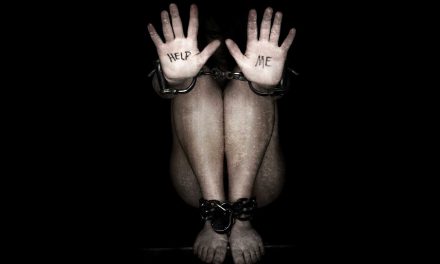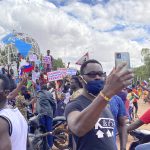When Francis saw a group of miners accompanied by mine security personnel approaching him, he breathed a sigh of relief. At last, his almost 12-hour ordeal was over. Although he knew he had lost his only source of income and was heading to jail in a foreign country, it was nothing compared to the trauma he’d endured in the past few hours – the fear of being blown to pieces.
His hands and feet were bound, explosive charges intermingled in his hair, and the fear that the explosive fuse would ignite at any moment was too much to bear. On his chest was a sheet of paper on which “I am a traitor” was scribbled as a clue to the heinous crime he’d committed. The fact that he dared rat out the brotherhood of illegal miners was the most unforgiveable sin he could have committed for which the only fitting punishment was either to be killed or exposed to law enforcement.
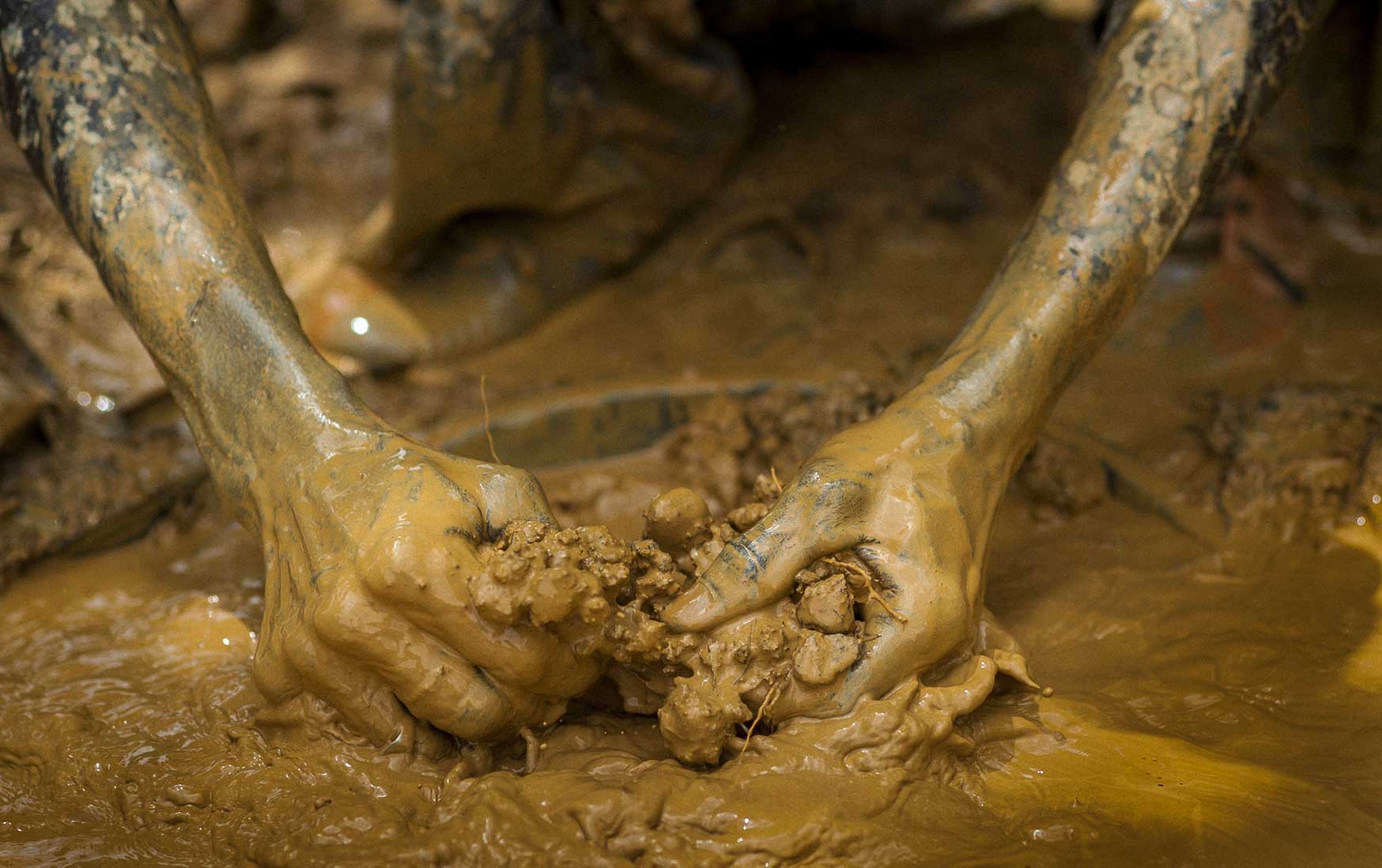
An illegal gold panner clears mud and sand as he works on a gold field in Kibi, Ghana, in April 2017.
Francis is an illegal miner, or as most are commonly referred to in South Africa, a zama zama. After he finished school in Lesotho, he struggled to find work to provide for his family. As the eldest son, Francis was responsible for providing for his siblings and unemployed mother. His father passed away when he was young. One day, he overheard that one of his former classmates had found employment in South Africa working at a mine and was making lots of money. He was in desperate need of money and decided to try his luck as well. After a couple of meetings with a recruiter, he ended up working with fellow countrymen in one of the abandoned mines on the western side of Johannesburg. What Francis would later learn is that there was nothing legal about this type of work. Making money depended on how hard one worked – and luck was critical.
After almost a year working as a zama zama and making a decent income, Francis befriended a South African woman who usually bought gold from him. Unbeknownst to him, the “buyer” turned out to be a police informant. Eventually, Francis was ousted as a sell-out and had to face the ultimate punishment for betraying his fellow miners – death or jail. Fortunately for him, he was found before being blown up but he was later sentenced to 10 years in prison. This is the cruel and unforgiving reality of illegal mining.
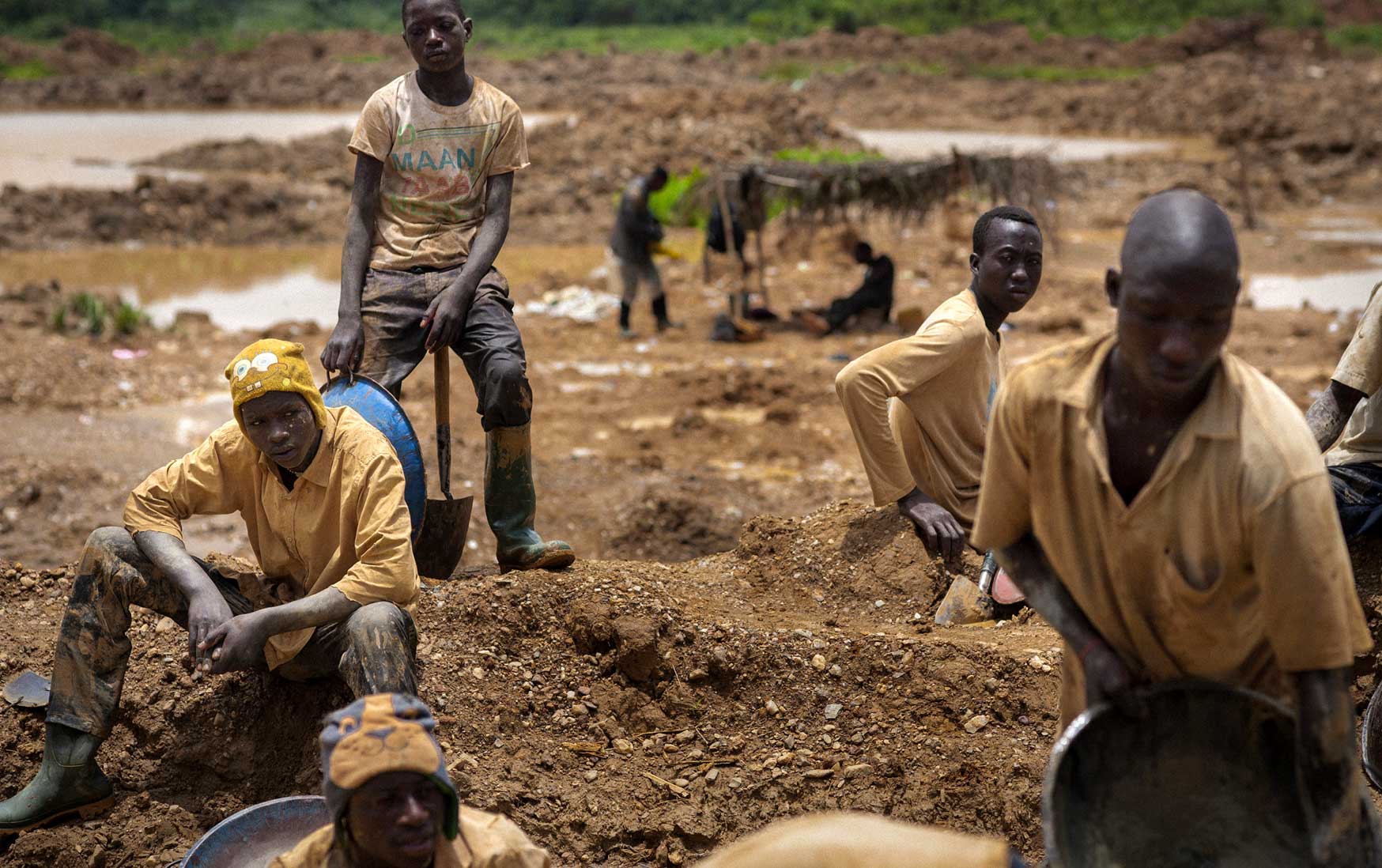
The term “illegal miner” is as complex as it is emotionally charged. Some illegal miners are perceived as criminals, while others are merely trying to make a living due to desperate economic circumstances that are no fault of their own.
In simplified terms, an illegal miner is someone who mines without a permit and who is in contravention of the mining legislation of a country. Artisanal miners often fall into this category; but one can be an artisanal miner without a permit and that individual is, most of the time, not a criminal.
This article, however, explores the other type of illegal miner who enters the mine shaft (in use or abandoned) illegally, intent on removing gold-bearing material and who works for an organised criminal network.
According to the South African Chamber of Mines, illegal mining costs the country’s economy about R7 billion annually (about $413 million). While there is consensus on the need to address this challenge the solutions are not as evident, usually falling into two categories, namely, banning or legalising the practice. The cases of Ghana and South Africa exemplify this dilemma.
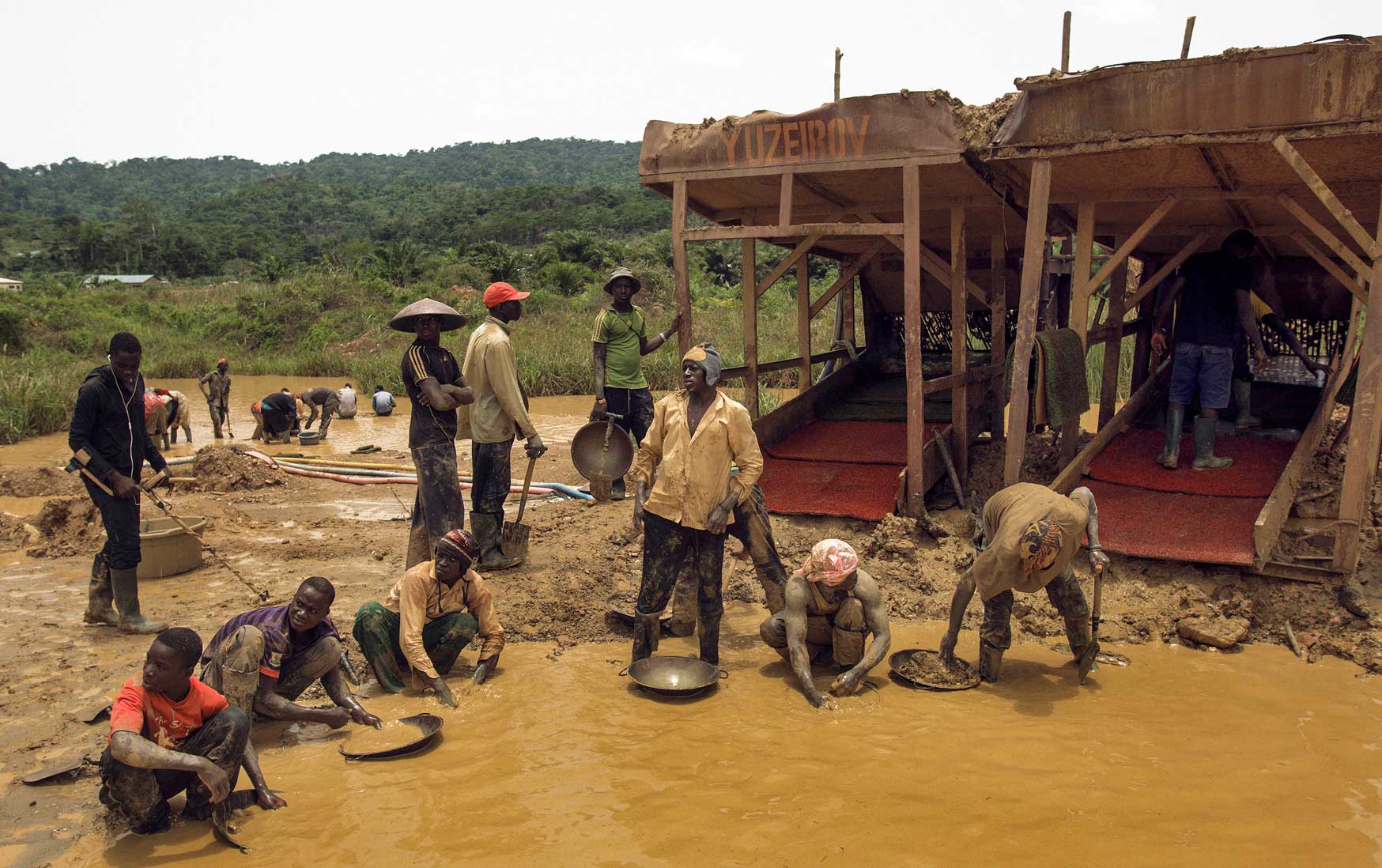
Illegal gold panners work with simple machinery such as excavators and filters made of old carpets in Kibi, Ghana. Photo: Cristina Aldehuela/AFP
In his speech at the 2019 mining indaba in South Africa, Ghana’s President Akkufo-Ado noted how a two-year ban on unlicensed mining had curbed illegal mining (or galamsey as it is commonly known in Ghana) and its dangerous impact on the environment and the economy, stating that “heavily polluted rivers showed signs of being restored to health”.
However, the government’s approach was criticised as being too heavy handed on illegal and small-scale miners alike. There were reports of soldiers involved in extortion from illegal miners. Also, many of those arrested were players at the lower end of the illegal mining network, while the big players or bosses were left alone, free to return to their operations once the ban was lifted.
In South Africa over the past few years, illegal mining has led to the temporary closure of commercial mines, illegal miners trapped or killed underground, and a rise in violent crimes as gangs of miners fight for control of illegal mines. As a mine manager told Africa in Fact under condition of anonymity, “criminal miners have evolved to the point where legal mines are hijacked and legal miners are held at gunpoint, while zama zamas steal the gold from legal mines and mine managers receive death threats.”
The 2018 grant of permits to illicit artisanal diamond miners in Kimberley, South Africa, to mine about 600 hectares of land provided by the Kimberley Ekapa Mining Joint Venture is often hailed as the model to address the illegal mining issue through public-private collaboration. Yet replicating this model in the gold sector is more difficult due to the cost involved in making underground mines safe and workable. The other challenge is the organised criminal network within South Africa’s illegal mining sector.

A member of a mine security company apprehends an illegal miner while rescue teams pull an injured illegal miner out of a disused gold mine shaft in South Africa. Photos: John Wessels/AFP
Illegal mining functions on five interlinked levels to achieve the greatest profits. Level one comprises the illegal miners (often referred to as runners) on the ground who physically mine the precious metal and refine the product with chemical substances, like the work Francis was doing before his arrest. The gold-bearing material is then transported from the mine to a middle person, one of the buyers who often reside in the surrounding area and are classified as level two operators in the criminal chain.
These buyers, in turn, sell to level three actors, who legally deal in precious metals and launder the gold in the legal economy by smelting it, “mixing stolen high-grade material with low-grade material to conceal its nature and source”. These are often referred to as national buyers.
At the fourth level, local syndicate leaders use fronting companies to export the precious metals obtained from the national buyer. These local syndicates are often connected to larger international operations and crime groups. The final tier consists of the international buyers who receive and distribute the goods to their global clients.
Though most illegal miners do the job due to their socioeconomic circumstances, it’s also important to understand the criminal elements at play within the sector. Criminal syndicates operating in these mines use any means necessary to achieve their goals.
As a former section commander at the Explosives Unit of the South African Police Service (SAPS) explains, “The majority of these guys (illegal miners) are criminals,” he told Africa in Fact. “They would not think twice to shoot [at] police and escape the rule of law.”
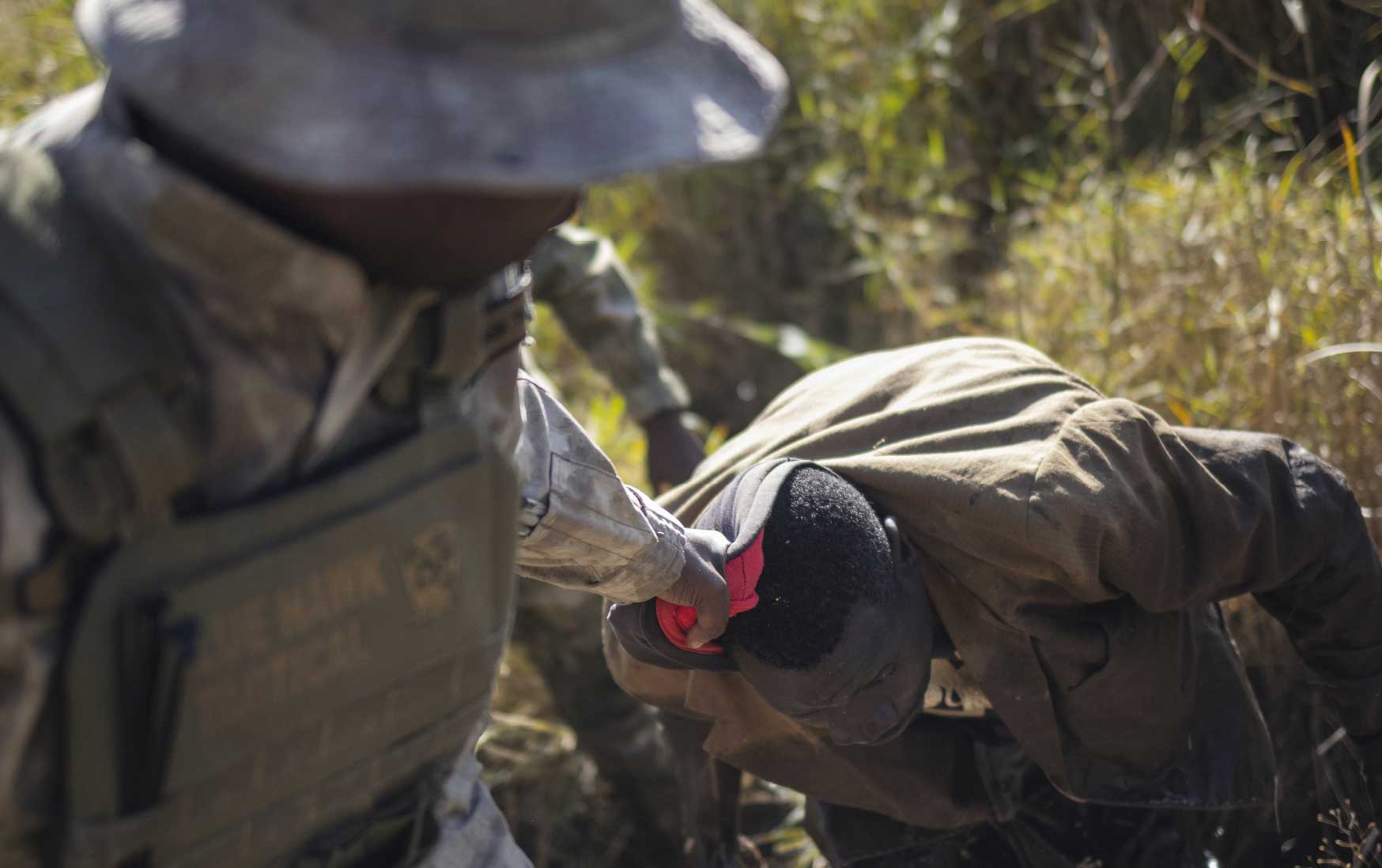
An illegal miner is apprehended by member of a mine security company. Photo: Cristina Aldehuela/AFP
Given that illegal mining is connected to other forms of organised crime such as human smuggling and trafficking, money laundering, illegal weapons and explosives, violent crimes, customs offences and tax evasion, tackling illegal mining requires addressing actors at the various levels of the criminal value chain (CVC).
Targeting level-one actors is not the most effective approach. Syndicates easily replace illegal miners given the high number of unemployed individuals who have no other means of making a living.
The higher one goes up the hierarchy of the illegal mining network, the more sophisticated the actors and syndicates become. Level three actors and above are more difficult to apprehend as this is where illegal precious metals are laundered into the legal market and sold internationally. Determining whether precious metals are legal or illegal, therefore, becomes crucially important.
To this end, gold fingerprinting technology becomes critical in determining whether the gold was stolen or legally obtained. However, the cost of developing and maintaining this technology, coupled with scarce human resources expertise, might prove too costly for law-enforcement agencies.
The complexity of the illegal mining network makes it almost impossible to eradicate. No agency, government department or ministry can address the challenge on its own; it requires a combined effort. Until this happens, the illegal mining network will flourish, to the benefit of the level five actors, namely, the “dons of gold”.



